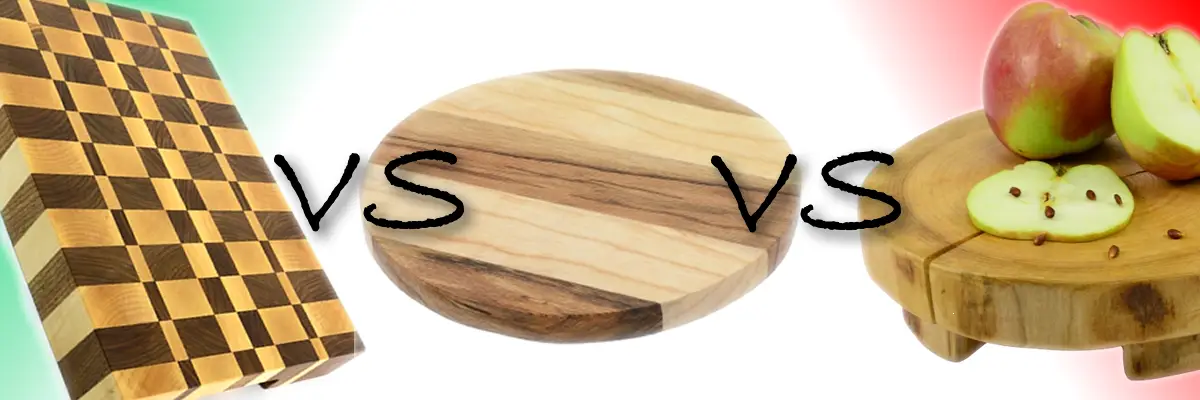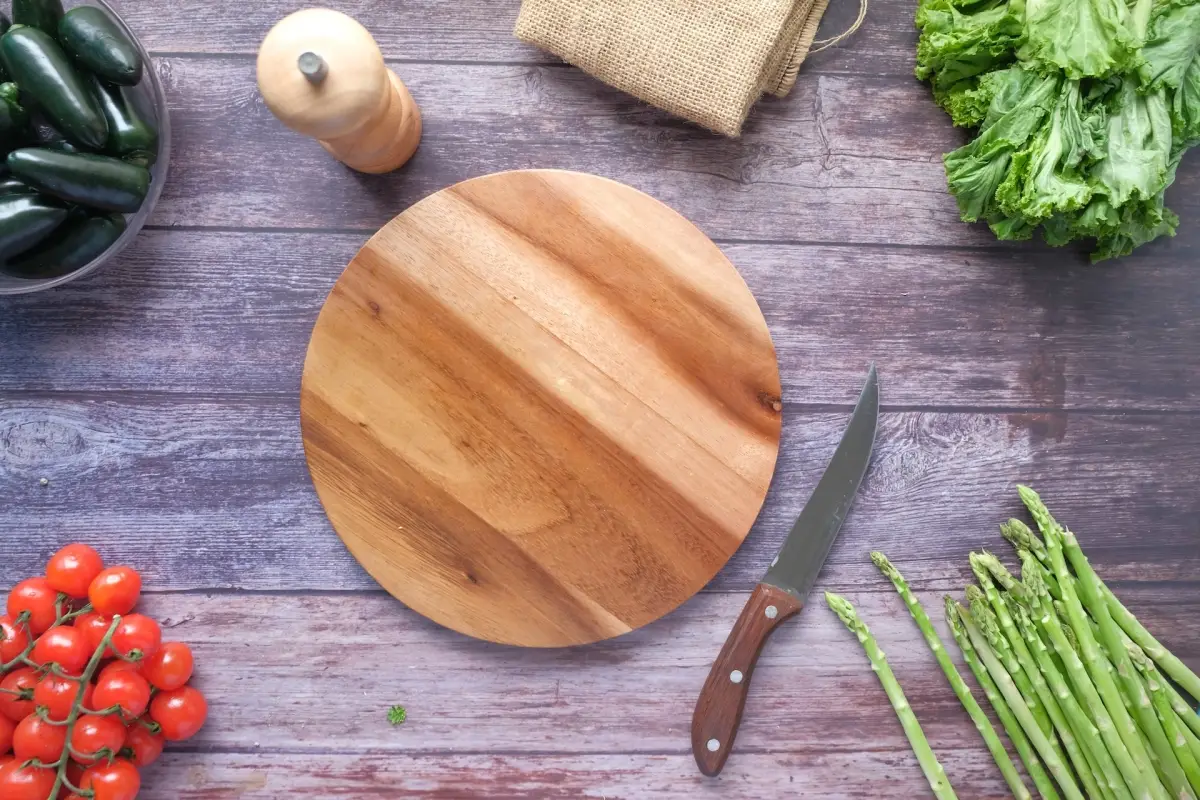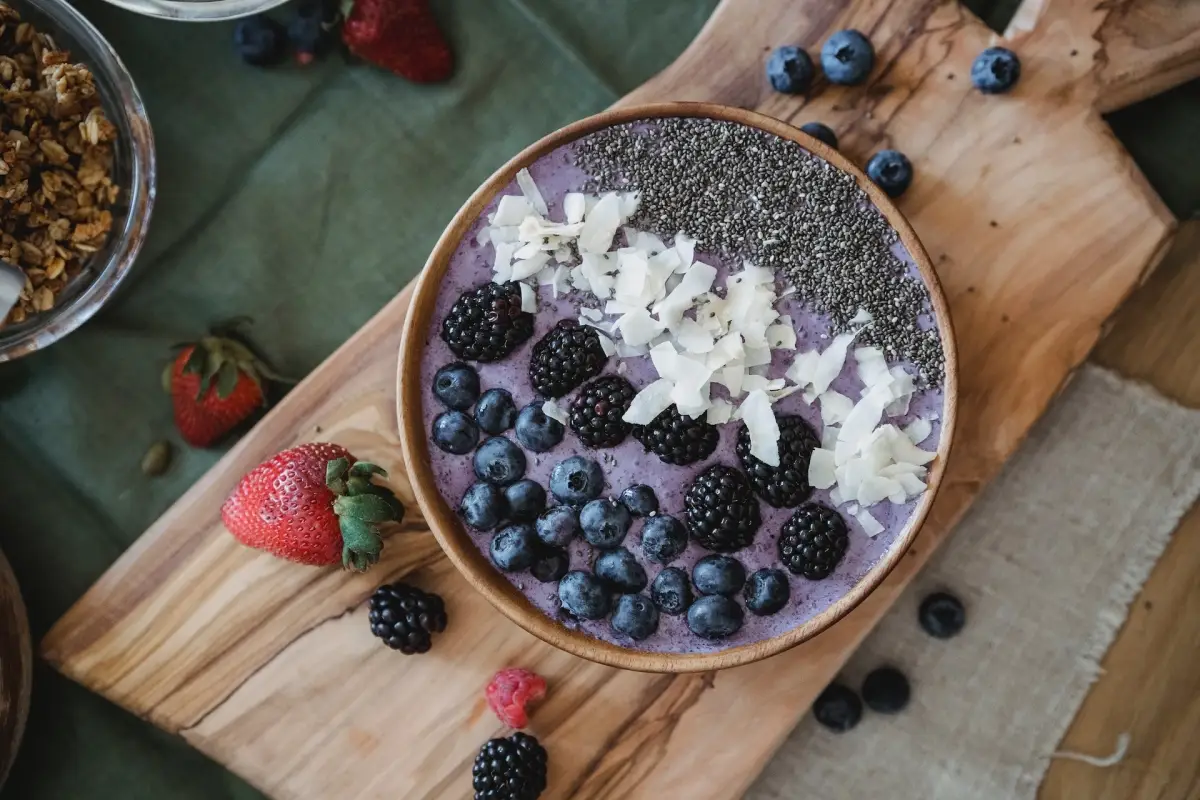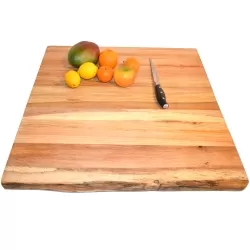Chopping board Vs Cutting board Vs Serving board

The technical difference
Although at first glance it may look the same in practice, using the wrong type of board for an activity other than the one for which it was created can lead to its damage.
Thus, from a technical point of view, there are 3 factors that differentiate a chopping board from a cutting board and a serving board.
The wood from which it was made
The first factor is the wood from which it was made.
Only hard wood such as oak, beech or cherry is used for the chopping board. For the cutting board, in addition to hardwood, wood with softer fibers such as lime or fir is often used, but this is uncommon. The reason why wood with a softer grain is used to make it lighter is because it is an important aspect for some people who prefer the cutting table to be easy to move.
When it comes to serving boards, the wood used to make them is chosen for looks rather than strength. Thus, in most serving boards, the wood used is very beautiful with a lot of character as if trying to tell a story about the tree it comes from.
The thickness of the wood
The second factor is the thickness of the wood, because in addition to the essence of the wood, its thickness is carefully chosen to serve the purpose for which the board is made. Thus, when it comes to thickness in reverse order, the first place will be the serving board, followed by the cutting board, and finally, with the largest thickness, the chopping board will occupy the last place.
- The serving board has a thickness between 1 cm and 2 cm;
- The cutting board has a thickness between 2 cm and 2.5 cm;
- Chopping board has a thickness between 2.5 cm and 5 cm;
Here I would add 2 notes: Chopping boards are also cases where they can reach a thickness of up to 10 cm, but these types of boards are specially made to order and are used at an industrial level. Also, for serving boards, the size of commercial ones was taken into account and not the hand-made ones, which in most cases are 1-2 cm thicker.
Cutting and joining wood
The third factor is the cutting and joining of wood in obtaining the board.
It is very common for serving platters to be made from a single piece obtained from a slice of wood on which you can count the circles that represent the years of the wood trunk from which it is made.
However, these wooden slices can break with the lightest blow of a knife. Going further, the cutting boards are made of wood whose fiber is along the length of the board as in the image below.
When it comes to chopping boards, they are created from as many pieces of wood glued together as often as possible to stop the vibrations created after the blows and not allow the wood to crack. Going further, some chopping boards that are created for intense exploding (such as the BIGBOY chopping board made and marketed by HANDMADE) have metal inserts between the wooden slices to hold them together and prevent them from breaking.

Conclusion
All these factors presented in the technical chapter above combined together create the main characteristic that makes a certain type of board different from another type of board thus obtaining the main factor which is given by the resistance to shocks. Practically, the resistance to shocks created during exploitation is the most important factor in choosing a board for a particular job.
This is not surprising, especially since for example chopping boards have to withstand a very high level of shock and force compared to other types of boards such as cutting boards or serving boards.
From a distance, the boards look the same and many consider them identical, but there are characteristics that make these boards excel in the purpose for which they were created, and using them for another purpose can lead to their destruction.

Which is the best choice?
If you had to use only 2 boards, it would be advisable to choose a chopping board and a serving board because you will use the chopping board for all food preparation operations and it will always be in use or it will be found in the dryer after it has been washed ready to move on to the next activity, but it will rarely be found on the dining table, especially due to its size and weight. In addition, the serving board will always be found in the dining room, being an ideal decoration element.
If you were to choose only one board, then you would have to choose one that can be used for all operations in the kitchen and can also be used on the dining table when needed. Thus, the ideal candidate would be a medium to small size chopping board that can be easily folded and used in several locations.
Practically, the best choice depends on the level of investment you want to make in these boards. Having several dedicated boards for several types of activities will considerably increase their operating period and will serve you successfully for years to come. On the other hand, you can also go for one or two boards as I presented above, especially if you are a minimalist person who wants a kitchen as simple as possible.







